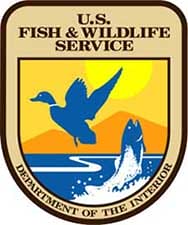National Wildlife Refuges Play Well on the Silver Screen Could this be an Oscar Year?


Washington, DC –-(Ammoland.com)- This year’s Academy Awards ceremony holds special interest for the Fish and Wildlife Service’s National Wildlife Refuge System.
Some critics are listing “Meeks Cutoff,” with scenes from Malheur National Wildlife Refuge in Oregon, as a possible Oscar contender.
“Meeks Cutoff,” starring Michelle Williams, Bruce Greenwood and Paul Dano, is about pioneers stranded on the Oregon Trail and was filmed from federal lands adjacent to the wildlife refuge.
Malheur Refuge manager Tim Bodeen knows why director Kelly Reichardt wanted to capture scenes of the refuge:
“We’re one of the nation’s great wild places where you can get wide open views of the natural environment,” he says. “And we have bountiful wildlife [including coyotes and mule deer] that people associate with historic America.”
Today’s visitors can hike, bike, fish and hunt on the refuge as well as see wildlife and tour the 19 th-century Sod House Ranch.
What are some of the better known refuge-linked movies? Besides “Meeks Cutoff,” there’s everything from a 1923 silent classic filmed at Guadalupe-Nipomo Dunes National Wildlife Refuge in California to a 1971 B movie filmed at Okefenokee National Wildlife Refuge in Georgia.
Okefenokee Refuge boasts about the refuge scenes in the 1971 film “Swamp Girl” and shows the movie to visitors. It does so even though the movie’s depiction of the swamp doesn’t match the refuge’s perspective, laughs refuge office assistant Judy Drury, who recalls the filming. It depicts, she says, “what everybody thought the swamp was – scary, bad, dreary, full of alligators and snakes – and not what it actually is. It’s so beautiful out there.”
Okefenokee Refuge is popular with paddlers, nature photographers, hunters and fishermen. Canoeists can follow water trails deep into the 354,000 acre wilderness, and visitors can tour a restored homestead to discover how “swampers” once made their home here.
In the case of the 1923 silent classic, director Cecil B. DeMille set up shop at or near what would later become Guadalupe-Nipomo Dunes Refuge to film his epic “The Ten Commandments.”
It’s “the only refuge that has an Egyptian city underneath,” jokes Fish and Wildlife Service senior writer/editor David Klinger. He’s not kidding entirely.
DeMille’s colossus of a movie built a lavish set to replicate the ancient City of Seti that boasted of “21 sphinxes, four 35-foot-tall statues of Ramses, and a commanding, awe-inspiring 110-foot-high set of massive city gates,” says Klinger. (The film won an Oscar for best visual effects.) When filming ended, the company simply dynamited the set, costumes and all, and buried them in the dunes. There they lay for decades until bits began resurfacing, exposed by wind and weather. Now, movie artifacts are on display where visitors can see them at the Dunes Center in nearby Guadalupe.
Refuge visitors can walk four miles across the beach to the refuge to see migrating waterfowl and shorebirds and coastal dune plants in bloom. The site is also a popular spot for surf fishing enthusiasts and wildlife photographers.
These days, commercial filmmakers work with refuge managers and need to obtain a special use permit to film on refuge lands. Rules posted by Merrit Island National Wildlife Refuge in Florida show the kinds of concerns typically addressed – primarily those of compatibility with wildlife conservation and safeguarding refuge resources.
Klinger says that carefully chosen film projects can enhance the public’s view of refuges “as long as they do not harm the resource,” he says. “Our job is to protect refuges for the present and future.”
About:
The mission of the U.S. Fish and Wildlife Service is working with others to conserve, protect and enhance fish, wildlife, plants and their habitats for the continuing benefit of the American people. We are both a leader and trusted partner in fish and wildlife conservation, known for our scientific excellence, stewardship of lands and natural resources, dedicated professionals and commitment to public service. For more information on our work and the people who make it happen, visit www.fws.gov.
The post National Wildlife Refuges Play Well on the Silver Screen appeared first on AmmoLand.com.
